Astronomy Education In Practice
Parallel Session
5th Shaw-IAU Workshop on Astronomy for Education
Session timeblocks
Wednesday Nov. 29, 2023
Session A: Astronomy in Primary Schools:
UTC: 3:30 p.m. -
5 p.m.
America/New_York:
10:30 a.m.-
noon
Thursday Nov. 30, 2023
Session A, repeated: Astronomy in Primary Schools:
UTC: 8 a.m. -
9:30 a.m.
America/New_York:
3 a.m.-
4:30 a.m.
Session B: Astronomy in Seconary Schools:
UTC: 12:30 p.m. -
2 p.m.
America/New_York:
7:30 a.m.-
9 a.m.
Friday Dec. 1, 2023
Session B, repeated: Astronomy in Seconary Schools:
UTC: 8 a.m. -
9:30 a.m.
America/New_York:
3 a.m.-
4:30 a.m.
This session will focus on astronomy education activities in classroom settings. We invite abstracts that provide examples of what worked well and/or describe how activities were developed. We welcome abstracts in the context of teaching astronomy as its own subject as well as part of other subjects. Abstracts are invited for both primary/elementary and secondary/high school settings.
Schedule
-
Using astronomy to tackle the consequences of COVID in the classroom
Wednesday Nov. 29, 2023
UTC: 3:35 p.m. - 3:50 p.m. America/New_York: 10:35 a.m.- 10:50 a.m.Thursday Nov. 30, 2023
UTC: 8:05 a.m. - 8:20 a.m. America/New_York: 3:05 a.m.- 3:20 a.m.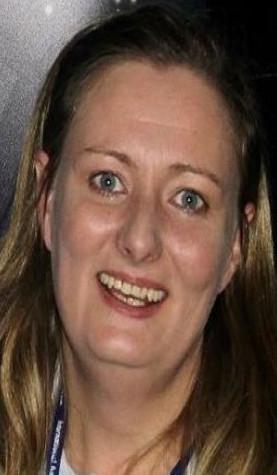
Emma Wride (AstroCymru)
For more information about this talk click here
-
Astronomy to reduce School Segregation: Lessons Learned from participation on the Magnet program
Wednesday Nov. 29, 2023
UTC: 3:50 p.m. - 4:05 p.m. America/New_York: 10:50 a.m.- 11:05 a.m.Thursday Nov. 30, 2023
UTC: 8:20 a.m. - 8:35 a.m. America/New_York: 3:20 a.m.- 3:35 a.m.School segregation is a growing problem throughout Europe that tends to create schools with a very high socioeconomic complexity. We present our experience within the Magnet program, where the Institute of Space Sciences collaborates in the 2021-2025 period with a school in Igualada (Spain). Advised by an expert in didactics, we have co-created with teachers and implemented inquiry-based astronomy activities for 3 to 11 year old students. The goal is to provide the school with added pedagogical and educational value, which can attract local families, in order to balance the demographics of the student body and promote inclusion in current and future society. In this talk, we will present the activities organized during the first half of the program, plans for the future and lessons learnt.

Jorge Rivero González (Institute of Space Sciences (ICE-CSIC))
Coauthors: Alba Calejero García (ICE-CSIC), Ángel Elbaz (ICE-CSIC), Guillem Anglada-Escudé (ICE-CSIC), Clara Dehman (ICE-CSIC), Albert Elias López (ICE-CSIC), George Ferentz (ICE-CSIC), Lluís Galbany (ICE-CSIC), Josep Miquel Girart (ICE-CSIC), , Abubakr Ibrahim (ICE-CSIC), Daniel Iñiguez (ICE-CSIC), Cristina Jiménez (ICE-CSIC), Simranpreet Kaur (ICE-CSIC), Maria Kopsacheili (ICE-CSIC), Alessio Marino (ICE-CSIC), Álvaro Sánchez Monge (ICE-CSIC), Juan Carlos Morales (ICE-CSIC), Tomas Müller Bravo (ICE-CSIC), Miquel Nofrarias (ICE-CSIC), Celsa Pardo (ICE-CSIC), Carlos Rodríguez (ICE-CSIC), Michele Ronchi (ICE-CSIC), Clàudia Soriano (ICE-CSIC), Daniele Viganó (ICE-CSIC)
For more information about this talk click here
-
The Musical Universe: introducing interdisciplinary astronomy-music workshops into primary schools
Wednesday Nov. 29, 2023
UTC: 4:05 p.m. - 4:15 p.m. America/New_York: 11:05 a.m.- 11:15 a.m.Thursday Nov. 30, 2023
UTC: 8:35 a.m. - 8:45 a.m. America/New_York: 3:35 a.m.- 3:45 a.m.School workshops can be an excellent way to introduce young pupils to all kinds of academic topics, and inspire them to learn. Ideally, a school workshop contains several elements to allow the pupils to approach the topic from different angles, and reinforce their learning. We developed a pilot of 3 workshops combining astronomy and musical composition, with both disciplines complementing each other. We delivered these workshops in three different P5 (9-10 year olds) class rooms in Scotland. We evaluated the workshops by interviewing the class room teachers before, immediately after, and several months after the workshops. We find that the workshops had long-term positive impacts on both teachers and pupils, which we will report on in this talk.

Anne-Marie Weijmans (School of Physics and Astronomy, University of St Andrews)
Coauthors: Ellen Thomson (Laidlaw Music Centre, University of St Andrews), Paula Miles (School of Psychology and Neuroscience, University of St Andrews)
For more information about this talk click here
-
Three examples of astronomy education in practice
Wednesday Nov. 29, 2023
UTC: 4:15 p.m. - 4:40 p.m. America/New_York: 11:15 a.m.- 11:40 a.m.Thursday Nov. 30, 2023
UTC: 8:45 a.m. - 9:10 a.m. America/New_York: 3:45 a.m.- 4:10 a.m.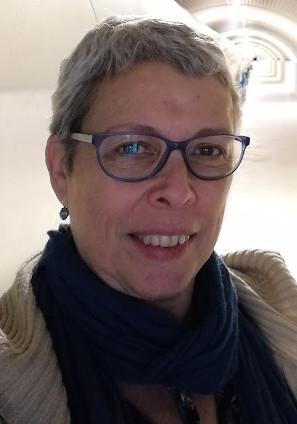
Rosa Doran (NUCLIO - Núcleo Interativo de Astronomia e Inovação em Educação)
For more information about this talk click here
-
Discussion Panel: Astronomy in Primary Schools
Wednesday Nov. 29, 2023UTC: 4:40 p.m. - 5 p.m. America/New_York: 11:40 a.m.- noon
Thursday Nov. 30, 2023
UTC: 9:10 a.m. - 9:30 a.m. America/New_York: 4:10 a.m.- 4:30 a.m.Chair:
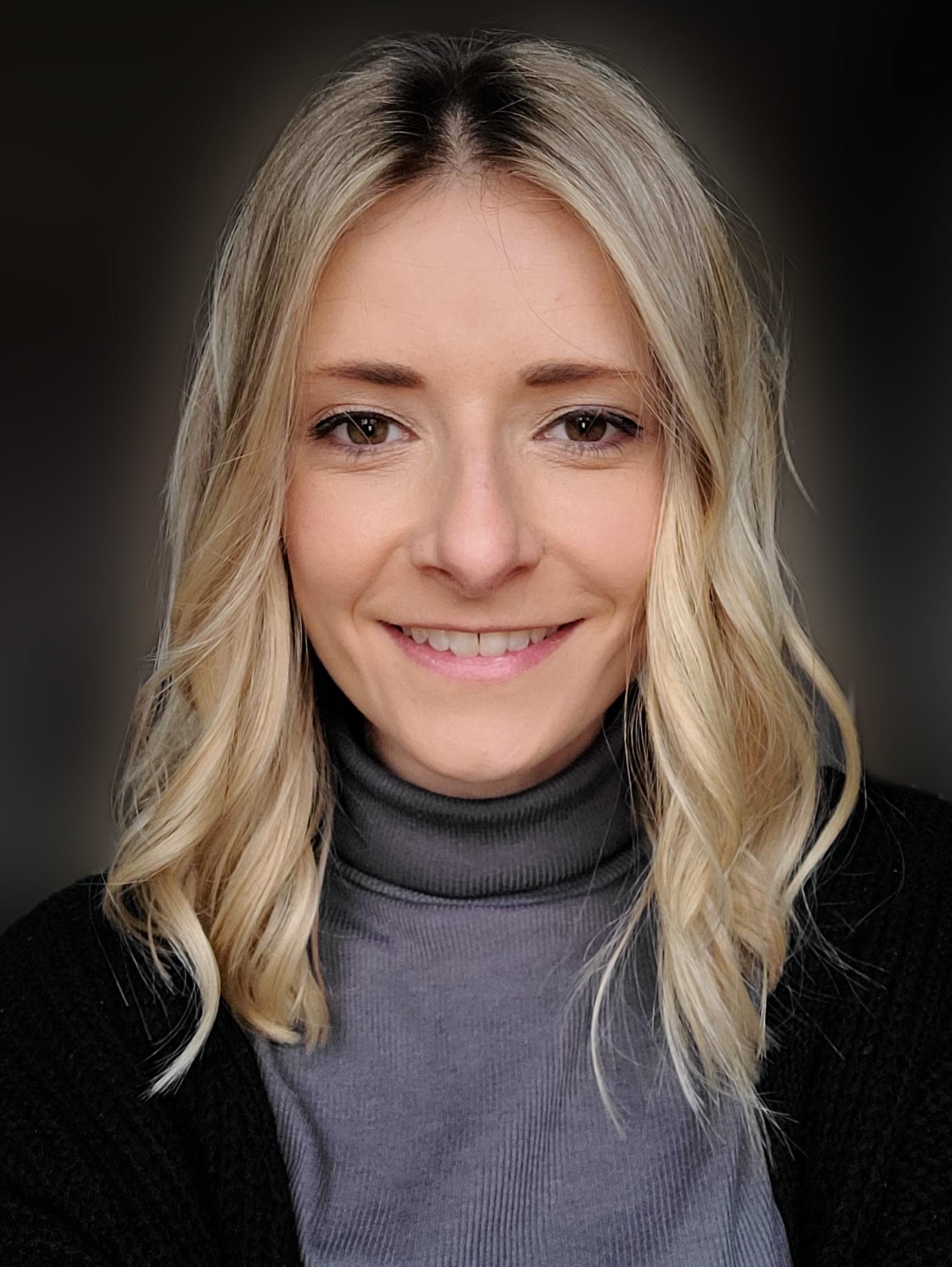
Sophie Bartlett
Panel: Emma Wride , Jorge Rivero González
(Joint Institute for VLBI ERIC (JIVE)), Anne-Marie Weijmans
(School of Physics and Astronomy, University of St Andrews), Rosa Doran
(NUCLIO) -
The Tactile Universe
Thursday Nov. 30, 2023
UTC: 12:35 p.m. - 12:55 p.m. America/New_York: 7:35 a.m.- 7:55 a.m.Friday Dec. 1, 2023
UTC: 8:05 a.m. - 8:25 a.m. America/New_York: 3:05 a.m.- 3:25 a.m.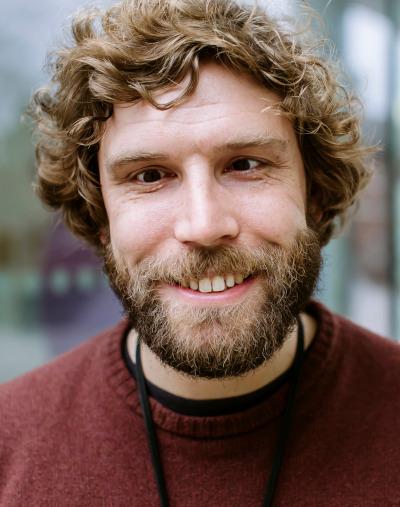
Nicolas Bonne (Institute of Cosmology and Gravitation, University of Portsmouth)
For more information about this talk click here
-
Origin of Life: An Interdisciplinary Approach
Thursday Nov. 30, 2023
UTC: 12:55 p.m. - 1:05 p.m. America/New_York: 7:55 a.m.- 8:05 a.m.Friday Dec. 1, 2023
UTC: 8:25 a.m. - 8:35 a.m. America/New_York: 3:25 a.m.- 3:35 a.m.In the natural sciences, the areas are connect when we look at them. In this work we'll present an interdisciplinary didactic sequence on the Origin of Life, which was collaboratively applied among teachers of a public school in São Paulo. In this approach, the origin of life was treated under the bias of biology, physics and chemistry in an integrated way. The results showed that students, because they're used to isolated disciplines, have difficulty in relating the different knowledge, however it can be observed that articulating the content in an interdisciplinary way, promotes a more contextualized learning for students. In the view of the teachers involved, the approach was challenging, but it demonstrated that this methodology can provide a more integrated and meaningful learning.
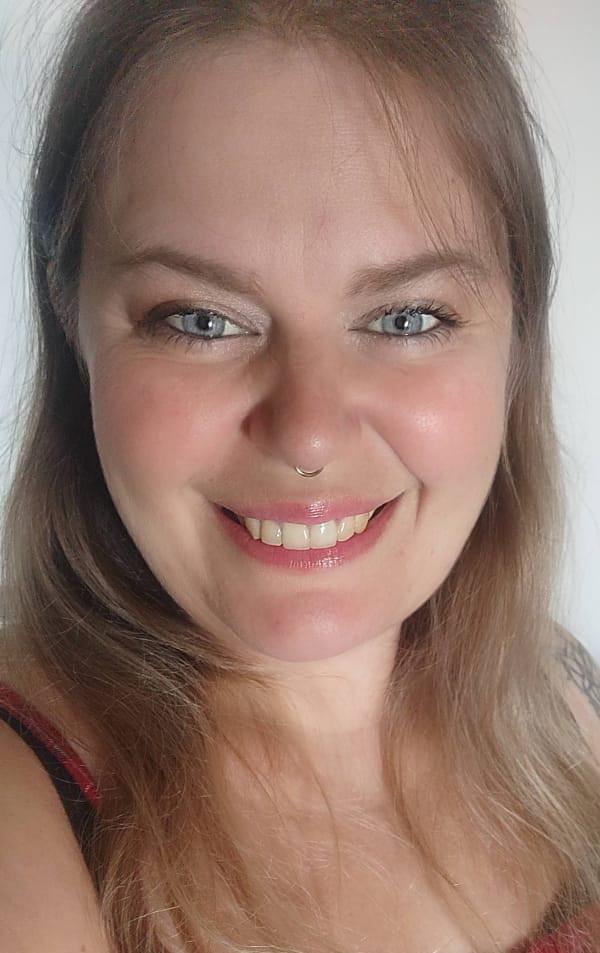
Daniele Pizzo (Instituto de Astronomia, Geofísica e Ciências Atmosféricas, University of São Paulo)
Coauthors: Elysandra F Cypriano
For more information about this talk click here
-
Training novae hunters: Using light curves of novae for mathematics learning in the school classroom
Thursday Nov. 30, 2023
UTC: 1:05 p.m. - 1:20 p.m. America/New_York: 8:05 a.m.- 8:20 a.m.Friday Dec. 1, 2023
UTC: 8:35 a.m. - 8:50 a.m. America/New_York: 3:35 a.m.- 3:50 a.m.The pedagogical team of the Center for Interdisciplinary Research in Astrophysics and Space science (CIRAS), aims to enhance astrophysics learning using astronomical data. We develop educational activities aligned with the high school curriculum in Chile, incorporating cutting-edge astrophysics research to motivate student learning. Using time-resolved photometric data from the LCO Global Sky Partners project, we construct light curves of recent nova explosions. These data are used to create comprehensive teaching sequences on topics like growth and decay functions in mathematics at the high school level. By bridging the gap between scientific research and the classroom, we contribute to a more engaging learning experience.
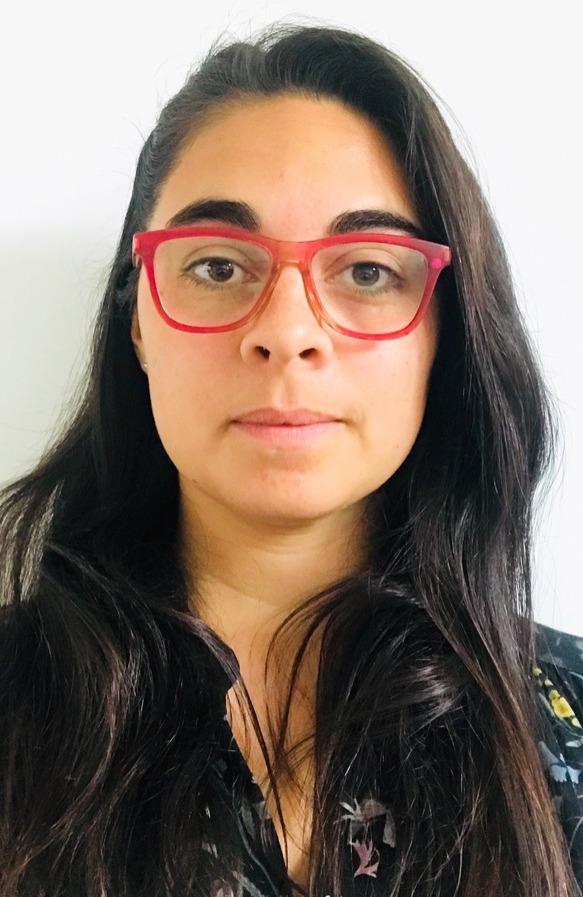
Ignacia Benito-Cisterna (Center for Interdisciplinary Research in Astrophysics and Space science (CIRAS))
Coauthors: Irma Fuentes-Morales (Facultad de Ciencia, Universidad de Santiago de Chile (USACH), Center for Interdisciplinary Research in Astrophysics and Space Science (CIRAS)), Carla Hernández (Facultad de Ciencia, Universidad de Santiago de Chile (USACH); Center for Interdisciplinary Research in Astrophysics and Space Science (CIRAS); Millennium Nucleus on Young Exoplanets and their Moons (), Carolina Fonseca (Facultad de Ciencia, Universidad de Santiago de Chile (USACH); Center for Interdisciplinary Research in Astrophysics and Space Science (CIRAS)), Fernanda Lueiza (Facultad de Ciencia, Universidad de Santiago de Chile (USACH); Center for Interdisciplinary Research in Astrophysics and Space Science (CIRAS)), Fernanda Alarcón (Center for Interdisciplinary Research in Astrophysics and Space Science (CIRAS)), Rubén Montecinos (Facultad de Ciencia, Universidad de Santiago de Chile (USACH); Center for Interdisciplinary Research in Astrophysics and Space Science (CIRAS)), Maribel Cornejo (Center for Interdisciplinary Research in Astrophysics and Space Science (CIRAS))
For more information about this talk click here
-
Demonstrating Exoplanet Cloud formation and Lighting in the Classroom
Thursday Nov. 30, 2023
UTC: 1:20 p.m. - 1:30 p.m. America/New_York: 8:20 a.m.- 8:30 a.m.Friday Dec. 1, 2023
UTC: 8:50 a.m. - 9 a.m. America/New_York: 3:50 a.m.- 4 a.m.Using exoplanets as a context for teaching may be an interesting way for students to think about the scientific principles at the core of a subject that hold universally, regardless of the planet being considered. For this project two classroom experiments have been developed that use simple and affordable materials such as recycled food containers and hairspray to allow students to explore the phenomena of clouds and lightning by creating their own in the classroom. The experiments have been developed as part of the CHAMELEON exoplanet research network and are accompanied by supporting lesson materials. These materials are designed for STEM students aged 16-18 and make use of the inquiry-based learning 5E model focusing on student-led learning.

Oriel Marshall (Demonstrating Exoplanet Cloud formation and Lighting in the Classroom)
Coauthors: Jesper Bruun, Andersen Anja Cetti (Niels Bohr Institute, University of Copenhagen), Katrien Kolenberg, Peter Van Petegem
For more information about this talk click here
-
Discussion Panel: Astronomy in Seconary Schools
Thursday Nov. 30, 2023UTC: 1:20 p.m. - noon America/New_York: 8:20 a.m.- 7 a.m.
Friday Dec. 1, 2023
UTC: 8:50 a.m. - 7:30 a.m. America/New_York: 3:50 a.m.- 2:30 a.m.Chair:
Panel: Nicolas Bonne
(Institute of Cosmology and Gravitation, University of Portsmouth), Daniele Pizzo , Ignacia Benito-Cisterna
(Center for Interdisciplinary Research in Astrophysics and Space science (CIRAS)), Oriel Marshall
Posters
-
Astronomy for all age groups
Shylaja B S (Jawaharlal Nehru Planetarium)
The sun, moon and stars have remained a fascination from time immemorial but have not entered the classroom in the strict sense. Basic concepts on the reason for seasons, meaning of equinoxes and solstices, or simply the meaning of the Tropic of Cancer and Capricorn have remained elusive for many people. Our festivals, literature (both classics and folk), proverbs commonly used have some astronomical ideas incorporated in them. Thanks to the advances in space technology, the knowledge on planets have escaped from the clutches of the astrologers. Still, the planetary events like conjunctions and oppositions need a clearer understanding. Here I plan to describe how different concepts of astronomy can be integrated in teaching all age groups not necessarily within the four walls of the classroom.
-
Design of a tourist trip to somewhere in space. Mixing knowledge with fantasy.
Cuauhtemoc Mendez (Tec de Monterrey / TRIBU cultura astronómica)
The final work of the Tec de Monterrey Astronomy course has been the elaboration of a fantasy trip tos pace. The students show what could be tourist attractions of places in space seen in the course, and also use their knowledge of Biology, Chemistry, Physics, and Astronomy, to produce unreal situations base don their learnings, be it the appearance of posible inhabitants, or the typical food of the place. Student´s presentations are regularly beyond what is necessary for the course, which is a sample of the engagement achieved in it, according to the bibliography consulted for the evaluation of engagement in the course.
-
Enhancing Primary Science Education through Interactive Astronomy Concept Diagrams
Ilham Bouisaghouane , Pedro Russo (Leiden Observatory and Dep. Science Communication & Society, Leiden University), Joanna Holt (Netherlands Research School for Astronomy (NOVA)), Bert Bredeweg
Astronomy concepts are abstract, students find it challenging to create the mental picture to fully comprehend them. Research has shown that didactical approaches based on hands-on – minds-on learning, support learners in the understanding of physical concepts. In close collaboration with The Dutch Black Hole Consortium we created lessons using smart education techniques inspired by their researchtopics. The goal of these lessons is to stimulate reasoning skills by the use of computer-based interactive diagrams during practical astronomy oriented lessons. We will introduce our interactive concept diagrams supported by hands-on practices. We will argue their benefits in primary education classes to help increase student involvement and develop adequate concept learning in the sciences.
-
Hands-on Astro activities in primary classes
Danijela Takač (Elementary School Pantovčak)
Teaching astronomy in primary classes is challenging and most rewarding subject you can teach. Students are full of wonder and imagination. These activities are most creative and most rewarding for a teacher. The downside of primary classes is that since stargazing is very challenging cause of the students young age all the activities have to be done in the classes. We will show physical and team-building activities - train like an astronaut, creative activities - painting stars and space with plasticine to crafty activities like making and launching a rocket. Teaching primary classes boosts teacher creativity and storytelling too.
-
Harnessing Infographics for Astronomy Education in Resource-Limited Regions: The Case of Iraq
Ali Al-Edhari (Al-Muthanna University)
In the digital era, effective science communication requires novel tools like infographics. They simplify complex concepts, making science, especially astronomy, accessible to broader audiences. This research emphasizes the use of infographics in advancing astronomy education in resource-limited regions like Iraq. The conversion of intricate data into visuals allows easy understanding, fosters self-paced learning, and engages larger audiences. Furthermore, their cost-efficient production provides a sustainable educational alternative for resource-constrained areas. Ultimately, infographics could significantly enhance scientific literacy in regions with limited astronomical resources, inviting more exploration of their impact across various scientific disciplines.
-
Igniting the Astronomical Spark: Unconventional Approaches to Teaching Astronomy
Carolina Escobar García (Galileo Teacher Training Program)
Even though in an ideal world everyone would have access to astronomy, that is not the reality for millions of people all over the world, and in Colombia, this happens even in the main cities of the country. Helios GTTP has created and carried out educational and outreach activities applying modeling instruction methodology and hands-on activities with communities that are not able to attend the planetarium or astronomy club´s activities and also are not considered the target audience because of geographical location, beliefs, or even prejudice.
-
Knowing the Unknown
Elisabeta Ana Naghi (Nationa Education Ministry)
Knowing the Unknown represents the summary of the activities dedicated to astronomy education in Romania, in the 2022-2023 school year, i.e. the implementation of the optional school program Start In the Adventure of Knowing the Universe. After its presentation, at the national meetings organized annually with the country's inspectors for primary education, mathematics and physics, the teaching bodies started training for teachers, school units in the country, together with universities/local authorities/NGOs, carried out activities of training for their employees, and the teachers held workshops with the students, promoting astronomy education in the camps, during class, as part of extracurricular activities.
-
Modifying the belief system through astronomy education
Murli Manohar Verma Verma (Department of Physics, University of Lucknow)
Astronomy is the only science whose education connects us psychologically to the territory of the unknown vastness and depths of spacetime. This leads us to weave together the fabric of humanity by eliminating the mundane aspects of conflicts and anxiety. However, to realize the full spectrum of such possibilities, I suggest a "touristic approach" in a "jigsaw model" with inescapble singularities of incompleteness. The expected viability of this model would ensure that the astronomy education leads to gross happiness and calmness on this planet.
-
Teaching astronomy with the GoChile project
Jure Japelj (University of Nova Gorica), Andreja Gomboc (University of Nova Gorica)
University of Nova Gorica (Slovenia) and astronomical magazine Spika run the GoChile project, which uses two small telescopes at the El Sauce Observatory in Chile. The two remotely operated telescopes are primarily intended for teaching—significant telescope time is reserved for secondary school students interested in astronomy. Through the project the students gain experience in observations and get introduced to the process of scientific research. I will present our activities in the past two years: remote teaching, mentoring of research projects and the organization of two summer schools. Interestingly, there has been a great interest in the telescope among girls, which was particularly evident in the summer schools, where more than half of the registrants and participants were girls.
-
The Starry Night Defenders: Integrative Astronomy Curriculum about Dark-Sky Social Innovation
Exodus Chun-Long Sit (Starrix)
Light pollution has always been advocated and promoted by astronomers and science communicators. However, artificial light at night (ALAN), as a crucial topic of environmental issues, has rarely been mentioned in the science curriculum in formal education. Beside motivating students through self-learning educational resources, how can we apply dark-sky education in general science learning? ASTROx is an interdisciplinary project that aims to solve real-life problems related to astronomy. The contribution will showcase a student-led social innovation project “The Starry Night Defenders”. Through a holistic design thinking process, students will explore different methods to redesign dark-sky-friendly light shields and ways for dark-sky advocacy.
-
The Tianyi Model of “Dark Night”Astronomical popular science education activities for Teenagers
Xinrong Shen (Jiangsu Tianyi High School, Jiangsu Autonomous Learning Institute)
The Astronomical Society of Jiangsu Tianyi High School has carried out practical exploration around "Dark Night", forming a popular science education model with a progressive curriculum design including popularisation, academic and research courses. This model stimulates students' interest through science popularization courses, consolidates students' knowledge through academiccourses, and guides students to solve problems through research courses. Over the past decade, the Tianyi model has achieved remarkable results. A number of papers on "Dark Night" have been published in SCI and other academic journals in and out of China, and a number of related projects have won awards in the academic competitions in and out of China.
-
Translating Contemporary Astrophysics Research into Teaching Materials
Oriel Marshall (Universities of Copenhagen and Antwerpen), Jesper Bruun , Andersen Anja Cetti (Niels Bohr Institute, University of Copenhagen), Peter Van Petegem
It has been shown that including modern science in the classroom can help students to understand the scientific landscape of the world today. The fast evolving field of exoplanet research is a promising subject to explore this idea through. In this project, we investigate methods of using expertise from both scientific researchers and teachers to iteratively develop hands-on lesson materials about exoplanet clouds and lightning for 16 - 18 year olds. These topics were selected as they are currently being researched by the CHAMELEON network. Additionally, these phenomena also occur on earth and can be linked to existing school curricula topics. The development of these lessons makes use of scientist-teacher partnerships, inquiry-based learning and the model of educational reconstruction.
-
Using Open Science To Determine Physical Properties of Near Earth Asteroids
Arushi Nath
The pace of discovery of near-earth asteroids outpaces current abilities to analyze them. Knowledge of an asteroid's physical properties is essential to deflect them. I have developed open-source algorithms for classrooms that combine images from robotic telescopes, open-data, and math to determine asteroids' size, rotation, and strength. I took observations of the Didymos binary asteroid, and my algorithm determined it to be 820m wide, with a 2.26-hour rotation period and rubble-pile strength. I measured a 35-minute decrease in the mutual orbital period after impact by the 2022 NASA DART Mission. External sources validated the findings. Every citizen scientist is now a planetary defender. The project won the 2023 Youth Astronomy Award of the Royal Astronomical Society of Canada.




